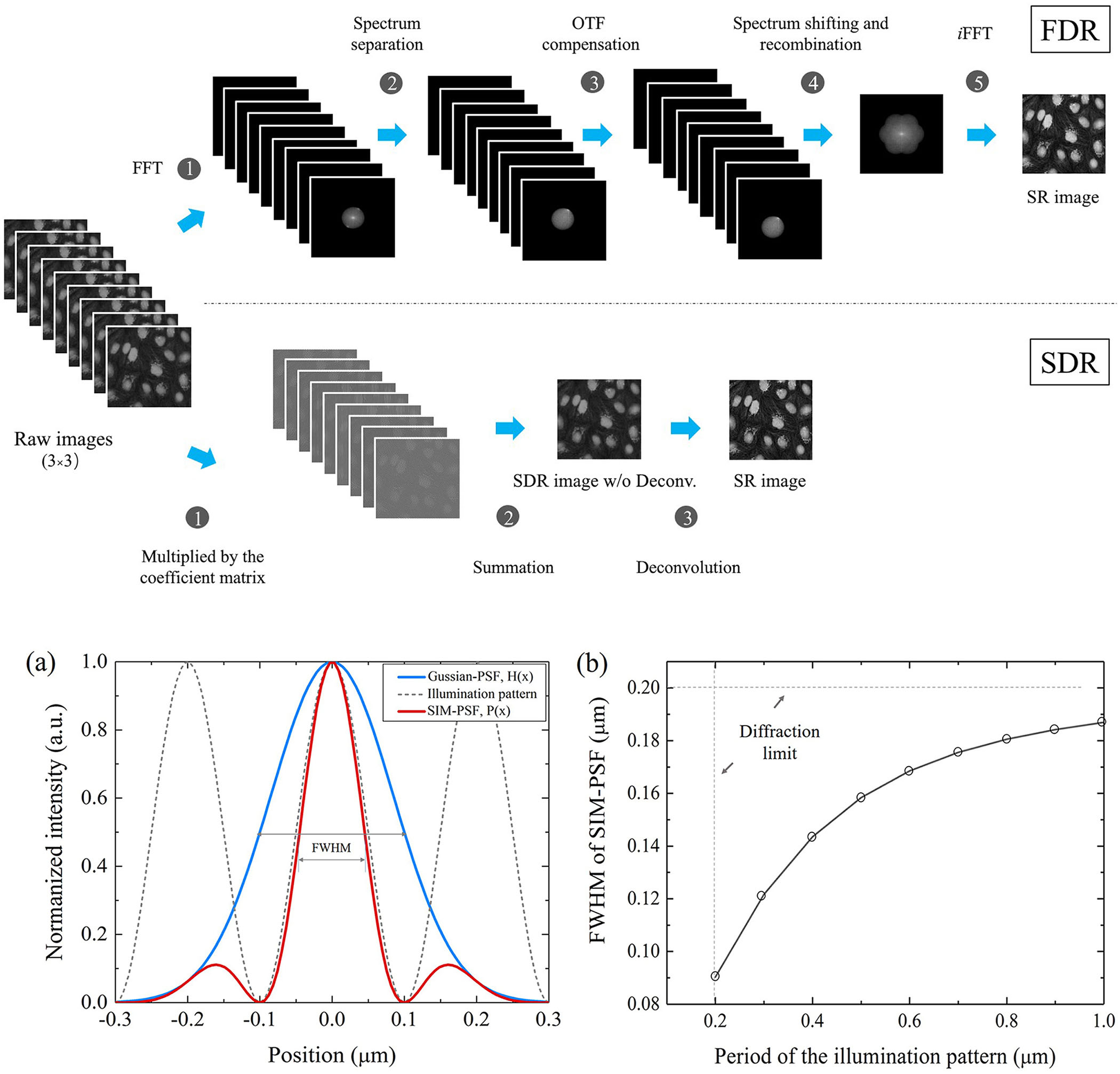 The concept and simple implementation for SDR-SIM. (Image by XIOM)
The concept and simple implementation for SDR-SIM. (Image by XIOM)
Optical microscopy is widely used in biological and medical research. However, optical microscopy resolution is subject to the Abbe diffraction limit and can not meet the requirement of resolving organism structures inside a cell. It is known that cells are the fundamental of life. With the studies going deep into cells, there is a great demand to break the Abbe diffraction limit to get a subcellular resolution for optical microscopy.
The super-resolution (SR) microscopy that emerged in recent years can beat the Abbe diffraction limit and achieve tens of nanometers in resolution. In 2014, the Nobel prize for chemistry was granted to three scientists dedicated to introducing SR microscopy concepts. Among these SR microscopies, structured illumination microscopy (SIM) outperforms in terms of fast imaging speed, low-level light invasion, robust to fluorescence labels, and compatible with a conventional optical microscope.
However, SIM routinely performs image reconstruction in the frequency domain using an approach termed frequency-domain reconstruction (FDR). Due to multiple Fourier transforms between the spatial and frequency domains, SIM suffers from low reconstruction speed, significantly constraining its applications in real-time, dynamic imaging.
Recently, a research team led by Prof. YAO Baoli at State Key Laboratory of Transient Optics and Photonics, Xi'an Institute of Optics and Precision Mechanics (XIOPM) of the Chinese Academy of Sciences (CAS), developed a new pipeline for SIM image reconstruction, termed spatial domain reconstruction (SDR), and thus addressed the challenge to SIM.
SDR is intrinsically simpler than FDR, does not require Fourier transforms, and the theory predicts it to be a rapid image reconstruction method. Results show that SDR reconstructs a super-resolution image 7-fold faster than FDR, producing images equal to FDR or the widely-used FairSIM. With SDR, researchers can real-time track two adjacent nanometer beads with super-resolution. This work was recently published in IEEE Photonics Journal.
The significantly enhanced image production speed and image quality produced by SDR result from two components of the scheme. First, image reconstruction is conducted in the spatial domain, eliminating the need for Fourier transforms that slow the reconstruction process and produce imaging artifacts. Second, the SDR SR image is attained by linear superposition of the raw structured images with appropriate coefficient matrixes. The method is elegant, simple, produces images rapidly, and is therefore ideal for live-cell imaging.


